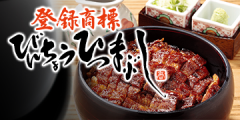- Home
- Sightseeing Spots
Sightseeing Spots
1 - 20 / 24 RESULTS
-
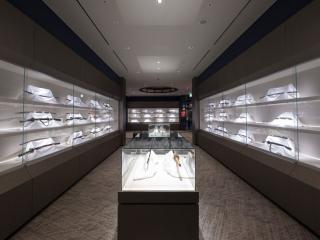
Sakae / Fushimi
Nagoya Touken World, Nagoya Touken Museum
Hommachi-dori Street in the Sakae area was constructed as a means to commute between Nagoya Castle and Atsuta Jingu Shrine just as the castle was being built at the beginning of the Edo period. More than 400 years later and the metropolis of Nagoya as we now know it owes much of its culture to this road. Nagoya Touken World—or the Nagoya Sword World—came to be in this very area in the Nagoya Touken Museum as a homage to the rich local history. Nagoya Touken World displays numerous ancient swords, armor, and other wartime memorabilia as well as important cultural properties in the present day as proud pieces of Japanese culture. Transcend time and space in the world of Japanese weaponry at Nagoya Touken Museum along Hommachi-dori Street in Nagoya's bustling Sakae area—host to both a rich history and the future to come. See More
Hommachi-dori Street in the Sakae area was constructed as a means to commute between Nagoya Castle and Atsuta Jingu Shrine just a…See More
-

Sakae / Fushimi
Yamazaki Mazak Museum of Art
This museum allows you to gaze over the 300-year history of French art from the 18th to 20th century with French Rococo to Ecole de Paris painted pieces, Art Nouveau glasswork and furniture pieces represented by Emile Galle, and more. ・Easy access, directly connected to Exit 1 of Shinsakae-machi Station on the subway Higashiyama Line ・Many Rococo paintings, including works by Marie Antoinette's personal painters ・The galleries are decorated with chandeliers and wallpaper that turn them into 18th century salons ・Free audio guides available See More
This museum allows you to gaze over the 300-year history of French art from the 18th to 20th century with French Rococo to Ecole …See More
-

Northern Area
Togokusan Fruits Park
A place of nature and history, Mt. Togoku (198 m) is the tallest mountain in the city, and is surrounded by 70 kofun sites. Togokusan Fruits Park is a multipurpose agricultural park at the base of the mountain that uses the rich natural surroundings. In the park there is an orchard where around 900 trees of 17 species of fruit grow, including peaches, Asian pears, and apples. There is a greenhouse where you can see papaya, jackfruit, and other rare tropical fruits, and a fruithouse where you can see exhibits of various sample fruits. Besides these, the park also has a fishing corner, Japanese-style garden, all-season flower garden, a restaurant, and shops. The park is a famous place for weeping cherry blossom trees in the spring. See More
A place of nature and history, Mt. Togoku (198 m) is the tallest mountain in the city, and is surrounded by 70 kofun sites. Togok…See More
-

Northern Area
Historic Townscapes of Nakaotai
This town was built along the Iwakura Kaido highway, which bustled with life as vegetables were brought from Iwakura to the Fresh Produce Wholesale Market of Biwajima. Townhouses and storehouses remain to this day, and you can feel the history of the highway. See More
This town was built along the Iwakura Kaido highway, which bustled with life as vegetables were brought from Iwakura to the Fresh…See More
-

Northern Area
Nagoya Noh Theater
The world's largest noh theater. Enjoy a mystical world. The building has a refined Japanese-style exterior, as is fitting for occasions such as watching a noh performance. Its defining features are the stage made entirely of Japanese cypress wood, the wooden interior fittings, and the large viewing area with 630 seats. Besides being used for noh, kyogen, and other traditional performing arts, the space is also used for international conferences, lectures, weddings, and so on. There is also a conference room that holds 99 people (with a lecturers' waiting room) and can be used for conferences, training programs, and more. In the exhibition room, there are panel displays and videos that explain the history and charms of noh in a way even beginners can understand, as well as explanations about noh in Nagoya. Admission to the exhibition room is free. Four to five days a month, t… See More
The world's largest noh theater. Enjoy a mystical world. The building has a refined Japanese-style exterior, as is fitting for…See More
-
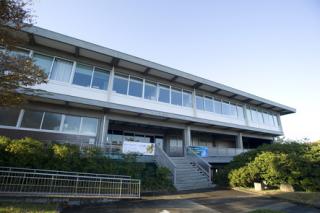
Eastern Area
Nagoya University Museum
Nagoya University Museum was established in April 2000 as the fifth integrated university museum in Japan. Its purpose is to comprehensively and internationally provide feedback, resources, and social return on the academic specimens and materials of Nagoya University, as well as the results of university research. It has six main missions: Research, Education for the Next Generation, Exhibitions, Creation and Inheritance of Knowledge, Specimen Collection, International Exchange, etc. See More
Nagoya University Museum was established in April 2000 as the fifth integrated university museum in Japan. Its purpose is to comp…See More
-
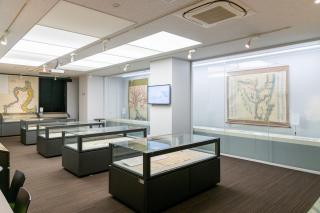
Eastern Area
Ogaki Kyoritsu Bank Takagi Family Documents Exhibition Gallery (inside Nagoya University Central Library)
The Ogaki Kyoritsu Bank Takagi Family Documents Exhibition Gallery is located in a corner of Nagoya University's Central Library, and as a permanent exhibit, it displays replicas of the Takagi Family Documents owned by Nagoya University (the establishment also holds special exhibits on other materials in the collection). The Takagi Family Documents are a collection of documents formerly owned by the Nishi Takagi family, a hatamoto clan whose fief was Tokigo and Tarago in Ishizu County, Mino Province (present-day Kami-Ishizu Town, Ogaki City, Gifu Prefecture), and some of them have been designated as Important Cultural Properties by the nation under the name "Kotai Yoriai Nishi Takagi Family-related Materials". There is no admission fee, and anyone can view them. You can also freely tour the Central Library by signing your name at the reception desk. See More
The Ogaki Kyoritsu Bank Takagi Family Documents Exhibition Gallery is located in a corner of Nagoya University's Central Library,…See More
-
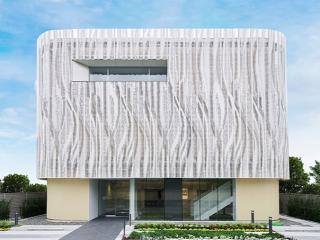
Eastern Area
Hoyu Hair Color Museum
Japan's first museum specializing in hair color, the widely known hair coloring company Hoyu opened the Hoyu Hair Color Museum as part of its 100th anniversary commemoration project. The museum highlights the culture and history of hair dyeing in Japan and Hoyu's history and involvement in the field. See More
Japan's first museum specializing in hair color, the widely known hair coloring company Hoyu opened the Hoyu Hair Color Museum as…See More
-

Eastern Area
Water History Museum
The Water History Museum is a place where you can easily learn about the history, role, and disaster prevention aspects of Nagoya's water supply and sewerage projects. It was established to commemorate the 100th anniversary of Nagoya City's water supply and sewerage business. The museum houses over 800 exhibits, showcasing historical materials and items related to Nagoya's water supply and sewerage projects. The friendly museum staff offer guided tours and organize seasonal events for visitors to enjoy. By visiting the museum, you can gain a clear understanding of the development and significance of Nagoya's water infrastructure and its essential role in disaster preparedness. If you're interested in learning about the history of Nagoya's water supply and sewerage, as well as its contribution to disaster prevention, the Water History Museum is the perfect place to explore. See More
The Water History Museum is a place where you can easily learn about the history, role, and disaster prevention aspects of Nagoya…See More
-

Eastern Area
Yokiso
A villa of history and culture Yokiso is a villa constructed from the Taisho to the Showa Era on the hilly land of Kakuozan by the 15th-generation Ito Jirozaemon, the a founder of Matsuzakaya Department Store. This is a representative suburban villa in Nagoya. 1) The north garden has many highlights around a pond. No reservation necessary. 2) A tour to the buildings and the south garden is conducted by a guide. Prior application required. See More
A villa of history and culture Yokiso is a villa constructed from the Taisho to the Showa Era on the hilly land of Kakuozan by…See More
-

Eastern Area
Temporary Closure
Nagoya City Museum
A museum of historical objects from the Owari region, with a focus on Nagoya A museum of historical objects from the Owari region, with a focus on Nagoya. The permanent exhibition hall gives an introduction to history from the Paleolithic Age to the present day. Many of the materials come from 24,000 or so donations from citizens, and there are over 270,000 artifacts in total in the collection. The special exhibition hall holds about five exhibitions every year, including special exhibitions on Cultural Heritage inside and outside Japan, and temporary exhibitions on the history and culture of the Owari region. There are also various events like lectures and workshops planned for visitors to the museum. In front of the museum there is a Japanese-style garden that can be enjoyed in every season. There is an auditorium on the basement 1st floor and a gallery on the 3rd floor that are op… See More
A museum of historical objects from the Owari region, with a focus on Nagoya A museum of historical objects from the Owari reg…See More
-
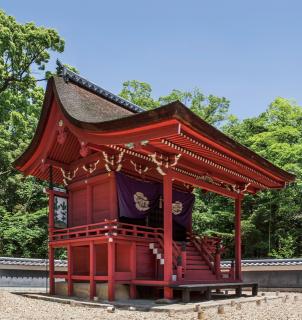
Southern Area
Tobe Shrine
Located in Nagoya city, is the only National Important Cultural Property among the shrines in the city. Its history dates back to the 8th year of the Keicho era (1603) when it was transferred from Tsushima Shrine in Tsushima City, Aichi Prefecture. In the 11th year of the Keicho era (1606), Matsudaira Tadayoshi (the fourth son of Tokugawa Ieyasu) prayed for recovery from illness and miraculously regained his health. To express his gratitude for this divine favor, the main hall, along with the worship hall, festival hall, and corridor, were donated to the shrine. During the Edo period, the Owari Domain annually donated 100 koku of rice to the shrine as part of their support. The shrine's maintenance and repairs were also carried out by the domain's lord. The main hall, a representative example of Momoyama architecture, has been designated as a National Important Cultural Property, whi… See More
Located in Nagoya city, is the only National Important Cultural Property among the shrines in the city. Its history dates back to…See More
-
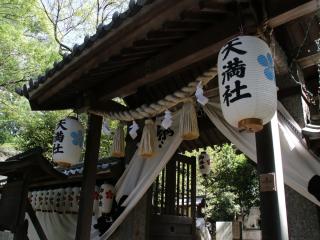
Southern Area
Arimatsu Tenmangu Shrine
Deity: Sugawara no Michizane History: In the early Kansei period, the fourth-generation head priest of the Shimogamo Shrine, Bumpō Manjizai, relocated the shrine to its current location. It is said that the present hachimote-style main hall was built in the seventh year of the Bunsei era. At the summit of Tenman-gū, before its relocation, numerous poems and writings offered by thousands of people were buried, giving rise to the name "Fuminomine" (Mount of Writings). Festivals: New Year Festival (January 1st) Spring Festival (Every third Sunday in March) Formerly held on the 25th day of the second lunar month (anniversary of Sugawara no Michizane's passing), this festival includes prayers for academic achievement, warding off misfortune, safety of the family, and prosperity in business. Purification rituals and offerings are also conducted. Autumn Festival (Every first Sunday… See More
Deity: Sugawara no Michizane History: In the early Kansei period, the fourth-generation head priest of the Shimogamo Shrine,…See More
-
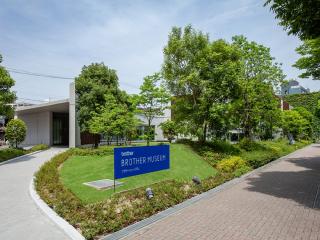
Southern Area
Brother Museum
An experiential and display museum for discovering the lineage of manufacturing Brother Museum has a Communication Hall, Product Zone, History Zone, Sewing Machine Zone, and Library. Such products as inkjet or laser printers, fax machines, home sewing machines, industrial sewing machines, electronic stationery and online karaoke systems are on display. ・The museum is home to one of the finest collections of sewing machines in Japan. The collection includes a replica of the first sewing machine in the world, antique sewing machines from overseas, iconic Brother machines, and more. ・Have fun with the latest Brother products. Try out the latest Brother technology by making sewing machine embroidery, creating name stickers and paper crafts, printing photos, and more. See More
An experiential and display museum for discovering the lineage of manufacturing Brother Museum has a Communication Hall, Pro…See More
-
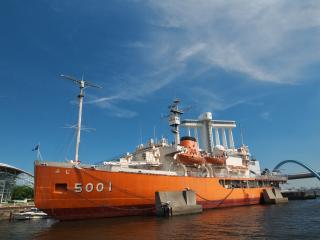
Port
Fuji Antarctic Museum
An Antarctic museum where you can go on an Antarctic adventure Fuji was Japan's first icebreaker, and spent 18 years traveling between Japan and the Antarctic. It is preserved just as it was in Nagoya Port, and has been reborn as an Antarctic museum to introduce various aspects of Antarctic observation. Besides reproductions of what it was like on the ship when it was in service, the museum also introduces the beautiful landscapes of the Antarctic and the history and significance of Antarctic observation, all in a way that's easy to understand. See More
An Antarctic museum where you can go on an Antarctic adventure Fuji was Japan's first icebreaker, and spent 18 years traveling…See More
-
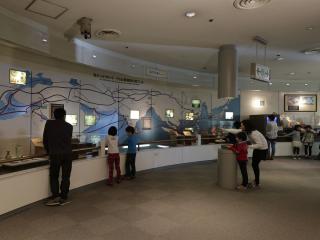
Port
Nagoya Maritime Museum
Have fun learning about the sea, ships, and ports A marine museum on the third and fourth floors of the Port Building, the symbol of Garden Pier. The third floor has the theme "Nagoya Port: The Number 1 Port in Japan for International Trade." It introduces the role of the port, its involvement in people's lives, its history, and more. Have fun learning about the sea, ships, and ports with genuine articles, panorama models, and a simulation that lets you experience the real-life atmosphere of the port. The exhibition room on the fourth floor has models of vessels used during the Age of Discovery and items traded on the Silk Road of the ocean. It also introduces the history of the relationship between the sea and people. See More
Have fun learning about the sea, ships, and ports A marine museum on the third and fourth floors of the Port Building, the sym…See More
-
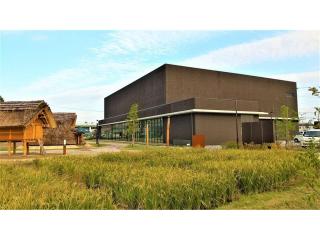
Outside of Nagoya
Aichi Asahi Site Museum
This museum of ancient civilization introduces the Asahi Ruins, the largest Yayoi-period ruins in Japan, located in Aichi Prefecture. The Asahi Ruins are one of the largest settlements in Japan, which existed from the early Yayoi period to the early Kofun period (6th century BC to 4th century AD). The settlement flourished as the center of life and culture in the region and played an important role in connecting the Yayoi cultures of eastern and western Japan. Investigations to date have revealed that the ruins stretch 1.4 km from east to west and 0.8 km from north to south, with an estimated area of 800 thousand to one million square meters. Residences were built on slight elevations on the north and south sides of a valley that flows from northeast to southwest. Graves were built to surround the residential area with large burial areas particularly widespread on the east and west … See More
This museum of ancient civilization introduces the Asahi Ruins, the largest Yayoi-period ruins in Japan, located in Aichi Prefect…See More
-

Outside of Nagoya
Inuyama Artcraft Museum / Karakuri Exhibition Room
Materials regarding the history and cultural heritage of a castle town, Inuyama, are exhibited. The floats of the Inuyama Festival, marionettes, and artifacts kept in Inuyama are also exhibited. Historical documents for the compilation of a history of Inuyama are preserved. The studio of a puppet master, the 9th Tamaya Shobe, is installed and marionette manufacturing is demonstrated every Friday and Saturday, from 10:00 a.m. to 4:00 p.m. A painting by Tsuda Teizo (the 13th Tsuda Sukezaemon) focusing on a marionette named "bishu kikogenso" is exhibited. See More
Materials regarding the history and cultural heritage of a castle town, Inuyama, are exhibited. The floats of the Inuyama Festiva…See More
-

Outside of Nagoya
Japanese Garden Urakuen
The Tea House Joan is a tea room constructed by Oda Urakusai, a prominent tea master born in the historical province of Owari during the early days of the tea ceremony. Designated as a national treasure in 1936, the structure is important to the history of tea ceremony culture. The study relocated at the same time as Joan is designated as an important cultural property. In addition, there are a tea ceremony room called Genan which Oda Urakusai built in Osaka’s Tenma neighborhood and was restored based on old drawings, a newly built tea ceremony room called Koan, and a four-season garden. See More
The Tea House Joan is a tea room constructed by Oda Urakusai, a prominent tea master born in the historical province of Owari dur…See More
-

Outside of Nagoya
Kiyosu Castle
In the 12th year of the Ōei era (1405) during the Muromachi period, Spwa Yoshi Shige, who held the position of shugo (military governor) of Owari Province, is said to have built the origins of Kiyosu Castle as a separate enclosure to the shugo's residence located in Shimotsu Castle (Inazawa City). In the first year of the Kōji era (1555), Oda Nobunaga entered Kiyosu Castle from Nakanogano Castle and achieved victory in the Battle of Okehazama in the third year of the Eiroku era (1560). This marked the castle as the starting point for his quest to unify the country. During the early Edo period, the castle town's population reached 60,000 to 70,000 people, earning it the title of "a major castle town in the Kantō region." Kiyosu Castle was also praised as one of the "great castles of the nation." The present-day Kiyosu Castle Tenshukaku (main keep) was built in the first year of the Heise… See More
In the 12th year of the Ōei era (1405) during the Muromachi period, Spwa Yoshi Shige, who held the position of shugo (military go…See More













